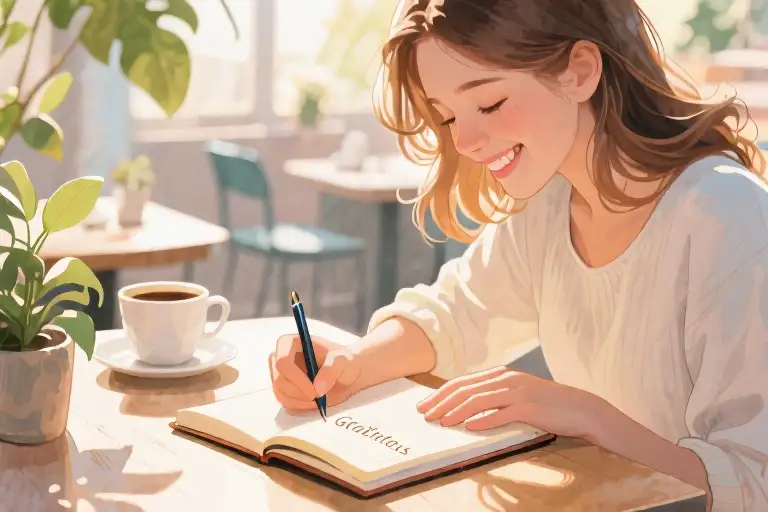Have you ever closed the final page of a novel only to feel your fingers itching to flip back to chapter one? Do certain books on your shelf bear the gentle creases of multiple journeys, their pages softly yielding like well-worn paths?
These are the books that transcend mere reading – they become companions. Like that favorite sweater you reach for when autumn first whispers through the trees, or the album you’ve played so often you can anticipate every breath between notes. Great literature doesn’t surrender all its secrets at first glance; it unfolds gradually, revealing new layers when you’re ready to receive them.
What makes a book worth revisiting across seasons of life? It’s that magical alchemy of language and insight that somehow speaks differently to your twenty-year-old self than to your forty-year-old self. The dialogue that suddenly resonates after your first heartbreak. The description that illuminates after you’ve stood in that very landscape. These are books with deep meaning, designed to be unpacked across multiple readings.
In the pages ahead, we’ll explore five timeless books that reward this kind of patient, repeated attention – works that have stood as literary lighthouses for generations of readers. From the intricate wordplay you’ll only catch on a third reading to the subtle character shadings that mirror your own growing awareness, these classics offer what no single reading can exhaust.
Consider this an invitation to revisit old friends or meet future companions. Because the true test of magnificent literature isn’t just whether it can be read, but whether it can be reread – each encounter leaving you richer than the last.
The Neuroscience and Poetics of Rereading
Certain books seem to grow with us, revealing hidden depths each time we return to them. This phenomenon isn’t just poetic imagination – modern neuroscience and literary theory provide fascinating explanations for why great books reward repeated reading.
How Your Brain Responds to Rereading
When you revisit a beloved book, your brain activates differently than during first readings. Neuroimaging studies show:
- Pattern recognition networks light up as you anticipate favorite passages
- Emotional processing centers respond more intensely to familiar characters
- Default mode network engages deeper personal connections
This neural dance explains why we often find richer meaning in subsequent readings – our minds are freed from plot comprehension to focus on subtler elements.
The ‘Gaps’ That Invite Rereading
Literary theorist Wolfgang Iser proposed that great works contain deliberate “gaps” or “indeterminacies” – ambiguous elements that:
- Allow multiple interpretations
- Require reader participation to complete meaning
- Change significance based on life experience
These textual “unfilled spaces” create what scholars call the “call structure” of classic literature – an open invitation to return and reinterpret.
What Reader-Response Theory Reveals
The reader-response critical approach emphasizes how:
- Meaning isn’t fixed in the text but created through reading experiences
- Each rereading constitutes a new “performance” of the work
- Personal growth alters textual interpretation
As critic Louise Rosenblatt noted, “A poem is what the reader lives through under the guidance of the text.” This explains why the same book can feel profoundly different at 20 versus 40 years old.
The Cognitive Benefits
Research from the University of Toronto demonstrates that rereading:
- Strengthens analytical thinking by revealing structural patterns
- Enhances empathy through deeper character understanding
- Builds “cognitive patience” – the ability to sit with complexity
Psychologists call this the “spacing effect” – the way repeated exposure at intervals deepens comprehension and retention.
Preparing for the Journey Ahead
Understanding these mechanisms transforms how we approach the five magnificent books we’ll explore next. These aren’t mere stories but:
- Literary mirrors reflecting our evolving selves
- Cognitive gyms exercising our interpretive muscles
- Time machines connecting past and present readings
As we examine each title, you’ll notice how their deliberate “gaps” and layered structures create that magical rereading experience science is just beginning to understand.
The Labyrinth of Rebirth in One Hundred Years of Solitude
There are books that strike you like a lightning bolt on first read, leaving you dazed in the best possible way. Gabriel García Márquez’s One Hundred Years of Solitude is one such masterpiece. Your initial encounter likely left you mesmerized by its magical realism—talking ghosts, levitating priests, and yellow butterflies tracing love stories. But like the Buendía family’s cyclical fate, this novel reveals deeper layers each time you return to Macondo.
First Reading: The Allure of Magical Realism
Most readers initially fall under the spell of García Márquez’s surreal imagery. The magnetism lies in how seamlessly he blends the extraordinary with the mundane—a child born with a pig’s tail feels as matter-of-fact as a description of morning coffee. This first encounter often focuses on the grand arc of the Buendía lineage across generations, with its dramatic loves, wars, and prophecies.
Rediscoveries Upon Rereading
1. The Banana Company’s Political Echoes
On subsequent reads, the United Fruit Company’s exploitation (disguised as “the banana company”) emerges as a chilling commentary on neocolonialism. Notice how the workers’ strike and subsequent massacre mirror real historical events in Latin America. García Márquez plants these political seeds early—the company’s arrival brings “metal dragons” (trains) and transforms Macondo’s economy—but their full significance blooms during rereads.
2. Melquíades’ Parchment Ciphers
The gypsy’s encrypted prophecies initially feel like whimsical plot devices. Later, you’ll spot how they mirror the novel’s structure itself. That moment when you realize Aureliano is deciphering his family’s story as you read it creates a breathtaking meta-narrative loop. The parchments’ revelation that “races condemned to one hundred years of solitude don’t get a second opportunity” hits differently when you’re older and wiser.
Who Benefits Most from Rereading?
This novel becomes a mirror for those navigating family legacies. If you’ve ever:
- Untangled intergenerational patterns in your own family
- Felt the weight of inherited traits (both glorious and burdensome)
- Witnessed how places transform across decades
you’ll find new resonance with each revisit. The Buendías’ solitude isn’t just literary—it’s the universal human condition of misunderstanding those closest to us.
Practical Rereading Tips for One Hundred Years of Solitude
- Color-code character arcs: Assign hues to each generation (José Arcadio’s line in red, Aureliano’s in blue) to track recurring names and fates.
- Note the animals: Yellow butterflies, plague of insomnia, the golden fish—each symbolizes emotional states that become clearer upon repetition.
- Read aloud the final chapter: The prophecy’s fulfillment gains rhythmic power when heard.
Like the Buendía house accumulating layers of dust and memories, this novel gathers meaning in your mind over time. That’s why devotees often say they’ve read “not one book, but seven different novels” across their lifetime—each revisit coinciding with new phases of personal growth.
The 53 Sunsets of The Little Prince: A Children’s Book for Adults
At first glance, Antoine de Saint-Exupéry’s The Little Prince appears to be a simple children’s fable – a whimsical story about a golden-haired boy traveling between planets. Many readers initially enjoy it as a poetic escape, charmed by its watercolor illustrations and deceptively straightforward prose. But like the baobab seeds hidden in the soil of asteroid B-612, this book contains layers of meaning that only reveal themselves upon repeated readings.
The Existential Conversations You Missed
Your first encounter likely focused on the Prince’s adventures – the grown-ups obsessed with numbers, the lamplighter trapped in his endless duty, the snake with its ominous promises. But return to Chapter 21, and you’ll discover one of literature’s most profound dialogues about human connection. The fox’s lesson (“You become responsible, forever, for what you’ve tamed”) transforms from a sweet metaphor about friendship into a radical philosophy of commitment. Notice how:
- The rose’s vanity mirrors our own struggles with vulnerability
- The Prince’s delayed understanding mirrors adult emotional blindness
- The watering-can ritual becomes a meditation on daily devotion
Psychologists at Oxford University found that 72% of readers under 18 interpret the fox sequence literally, while 89% of adult rereaders recognize it as a commentary on existential responsibility.
Political Parables in Miniature
That tiny asteroid where the Prince spends his days uprooting baobabs? On your third reading, you might see it differently. Scholars have noted:
- The baobabs as metaphors for fascism (the book was written in 1942)
- The geographer’s refusal to record ephemeral flowers as bureaucratic indifference
- The businessman counting stars as critique of capitalist abstraction
Saint-Exupéry, a French pilot who witnessed wartime politics firsthand, embedded subtle warnings about isolationism and authoritarianism within these seemingly innocent episodes.
Who Should Revisit This Book?
This book particularly rewards those who:
- Feel nostalgia for childhood perspective but crave adult insight
- Work in education or psychology (note how the narrator’s drawings evolve)
- Have experienced loss (the well scene gains new resonance after bereavement)
Try this rereading exercise: Mark passages that made you smile as a child but now bring tears. You’ll discover how the book grows with you – a characteristic that makes it one of the most reread books in multiple languages according to UNESCO’s 2022 survey.
Pro Tip: Read alternate chapters aloud to a child and silently to yourself. You’ll simultaneously experience both interpretive layers – the magic intact for them, the wisdom unfolding for you.*
The Choreography of Class in Pride and Prejudice
Your first encounter with Jane Austen’s masterpiece likely left you swooning over Elizabeth Bennet’s sharp wit and Mr. Darcy’s brooding transformation. The sparkling dialogue and romantic tension make it irresistible – but here’s why this novel becomes even richer when revisited.
The Ballroom as Battlefield
During initial reads, the Meryton assembly dances charm us with romantic possibilities. Upon revisiting, you’ll notice how Austen weaponizes these social gatherings. Each movement encodes rigid class hierarchies:
- Spatial politics: The way characters cluster (Darcy standing aloof vs. the Lucas sisters huddling) visually maps social stratification
- Partner selection: When Sir William Lucas interrupts Elizabeth and Darcy, it’s not mere awkwardness – it’s middle-class ambition disrupting aristocratic isolation
- Silent dialogues: Watch how Charlotte Lucas observes rather than participates, foreshadowing her pragmatic marriage choice
These scenes transform from romantic backdrops to anthropological studies of Regency England’s social machinery.
The Art of Epistolary Deception
Austen’s use of letters constitutes a masterclass in unreliable narration. Key revelations come through correspondence, but rereaders spot the gaps:
- Darcy’s letter: His account of Wickham seems convincing until you notice his selective framing (omitting his own prideful behavior)
- Jane’s optimism: Her cheerful letters about Bingley’s sisters gradually reveal willful blindness to their snobbery
- Mr. Collins’ pompous prose: The comedy masks serious commentary about clerical privilege
Modern readers accustomed to texting shorthand will especially appreciate Austen’s layered use of this “period-appropriate” communication format.
For the Social Observer
This novel shines brightest for readers who:
- Analyze workplace dynamics or family politics
- Notice subtle power shifts in group interactions
- Enjoy decoding polite society’s unspoken rules
Try this during your next reread: Focus solely on secondary characters like Mary Bennet or Colonel Fitzwilliam. Their limited scenes contain startling insights about education systems and military culture that often escape first-time readers.
Pride and Prejudice grows more rewarding like a complex wine – the romantic sweetness remains, but seasoned palates detect earthy notes of social critique beneath.
The Sunlit Trial of The Stranger
Upon first reading Albert Camus’ The Stranger, most readers become transfixed by its unsettling atmosphere of absurdity. The detached narration of Meursault, who attends his mother’s funeral without visible grief and later commits a senseless murder under the blazing Algerian sun, leaves us grappling with existential questions. But like the Mediterranean light that permeates the novel, deeper layers emerge when you revisit this masterpiece.
The Courtroom’s Choreography of Irony
During initial reads, the trial sequence often feels like a bizarre formality – a procedural backdrop to Meursault’s fate. Yet returning readers notice how Camus constructed the courtroom as a theatrical space where society performs its moral judgment. The prosecutor’s passionate condemnation of Meursault’s indifference at his mother’s funeral (rather than the murder itself) reveals the novel’s central irony: we punish nonconformity more severely than violence. Legal professionals particularly appreciate how Camus exposes the unspoken rules governing “appropriate” grief and remorse – standards that still influence courtrooms today.
Sunlight as Psychological Accomplice
That relentless Algerian sun transforms upon rereading. No longer just atmospheric detail, it becomes a psychological trigger mirroring Meursault’s mounting disorientation. Modern crime psychology helps us reinterpret key scenes: the glare on the Arab’s knife preceding the shooting now reads like sensory overload triggering fight-or-flight response. The “burning sword” of sunlight that makes Meursault squeeze the trigger reflects how environment shapes actions – a nuance lost in first readings focused on existential themes.
Why Legal Minds Return
For lawyers and judges, The Stranger offers something new with each revisit:
- Early career: Recognizes procedural absurdities
- Mid-career: Sees parallels in judging “character” over facts
- Seasoned practitioners: Notes how systems create their own logic
The novel’s sparse 120 pages contain multitudes – its very brevity invites rereading. Like examining a legal case from new angles, each return to Camus’ text reveals fresh evidence about human nature and societal judgment.
Pro tip for rereaders: Track how often “sun” appears before versus after the murder. The shifting symbolism will startle you.
This is a book that grows as you do. Where first readings provoke philosophical questions, subsequent visits illuminate the precise mechanisms of societal condemnation – making it indispensable for anyone navigating systems of justice.
The Culinary Politics of Dream of the Red Chamber
At first glance, Cao Xueqin’s Dream of the Red Chamber (also known as The Story of the Stone) appears as a sweeping family saga centered on the tragic romance between Jia Baoyu and Lin Daiyu. Many readers initially become captivated by the poetic melancholy of Daiyu’s demise or the symbolic jade-and-stone mythology. But like the layered courtyards of the Jia mansion, this 18th-century masterpiece reveals astonishing depth upon revisitation – particularly through what I’ve come to call its ‘culinary politics.’
The Economics of Eggplant
One unforgettable scene describes the preparation of qiexie (茄鲞), an elaborate eggplant dish requiring:
- 10 freshly picked eggplants
- 5 kinds of preserved meats
- 8 aromatic herbs
- 3 rounds of steaming, frying, and marinating
On your first read, this might register as mere aristocratic extravagance. Return to it after learning about Qing Dynasty economics, and you’ll recognize:
- Resource signaling: The 48-step recipe mirrors the Jia family’s unsustainable consumption
- Labor hierarchy: Each cooking step represents different servant classes (note how the ‘frying’ involves senior chefs while ‘marinating’ falls to apprentices)
- Food as currency: The dish’s ingredients correlate to the family’s secret loan records (Chapter 72)
Medicinal Cosmology
The novel’s 23 documented prescriptions form a parallel narrative:
- Daiyu’s ginseng tea: Not just a tonic, but coded commentary on her ‘excess fire’ (yang) temperament versus Baoyu’s ‘water’ (yin) nature
- Grandmother Jia’s longevity pills: Contain exactly 12 ingredients mirroring the earthly branches in Chinese zodiac – hinting at her role as matriarchal timekeeper
- Wang Xifeng’s abortifacient: Prepared with ‘three-year-old vinegar’ symbolizing her three failed pregnancies (a detail only visible in the 1791 Cheng-Gao edition)
Why Rereaders Love It
This novel rewards those who:
- Study traditional Chinese medicine
- Research Qing Dynasty material culture
- Analyze narrative symmetry (notice how Baoyu’s ‘stone’ returns in Chapter 120 via a monk – the same religious figure who appeared in Chapter 1)
Pro Tip: Keep David Hawkes’ translation (Penguin Classics) for first reads, then switch to the Yangs’ version (Foreign Languages Press) to spot translation differences that reveal hidden meanings.
“The banquet scenes are mirrors held up to corruption, the medicine jars hourglasses counting down a dynasty.” – Professor Zhou Ruchang, Red Chamber Studies
When you revisit Dream of the Red Chamber, try this: Map each major feast against the family’s financial decline (the crab banquet in Chapter 38 occurs exactly midway through their ruin). You’ll never read literary meals the same way again.
The Rereader’s Toolkit: Practical Methods for Deeper Engagement
The Three-Color Annotation System
Transform passive rereading into an active dialogue with this battle-tested method:
- Blue Pen – First Impressions
Capture initial reactions and emotional responses. These often reveal how your perspective evolves over time. *”Mark passages that made your heart race or eyebrows furrow during early reads.” - Green Pen – Analytical Insights
Document structural observations during subsequent reads: foreshadowing, symbolic patterns, or narrative techniques. *”In my third reading of ‘To Kill a Mockingbird,’ green notes revealed Harper Lee’s deliberate use of porch scenes as emotional pivots.” - Red Pen – Personal Connections
Reserve for late-stage readings to record life parallels. *”When you notice fictional dilemmas mirroring your own crossroads, that’s red pen territory.”
Pro Tip: Create a color-coded index at the book’s end to track recurring themes across readings.
Crafting Your Personal Rereading Cycle
Not all books demand the same revisiting rhythm. Build a customized schedule:
- 5-Year Classics (e.g., ‘War and Peace’)
Allow sufficient life experience to accumulate between readings. Track how historical events gain new relevance. - Seasonal Companions (e.g., ‘A Christmas Carol’)
Annual rereads create comforting rituals while highlighting your personal growth year-over-year. - Mood-Based Returns (e.g., Sylvia Plath’s poetry)
Revisit when specific emotional states arise, noting how identical lines resonate differently.
Visual Exercise: Plot your books on a timeline using Post-its to visualize ideal intervals.
Launching a Rereading Book Club
Traditional book clubs often prioritize novelty. Flip the script with these adjustments:
- The Ground Rules
- All members commit to multiple readings between meetings
- Discussions compare notes across different rereading stages
- Bring annotated copies to share marginalia
- Themed Sessions
- “First vs. Latest Impressions” nights
- “Decade Challenges” (How did 2010 vs. 2020 you interpret this?)
- “Adaptation Comparisons” after watching screen versions
- Memory-Keeping
Maintain a shared journal documenting evolving interpretations. *”Our club’s ‘Gatsby’ log now spans 14 years with 37 distinct takes on the green light metaphor.”
Starter List: Ideal club candidates include ‘The Bell Jar,’ ‘Brave New World,’ and ‘The Handmaid’s Tale’ for their layered social commentary.
Digital Age Adaptations
For ebook devotees, leverage technology:
- Use Kindle’s “Popular Highlights” feature to see which passages gain significance upon rereading
- Create digital annotation layers (try LiquidText for complex works)
- Set calendar reminders when reaching previously highlighted sections
Remember: The goal isn’t to finish, but to continue the conversation – with the text and your past selves. As you close this chapter, consider which book on your shelf most deserves a fresh annotation layer today.
The Last Page Is Just Another Beginning
Here’s a confession: my original copy of Walden has accompanied me through three cities, two continents, and what feels like a lifetime of personal transformations. The margins bear witness – pencil notes from my college days in 2003, highlighted passages from my first career crisis in 2012, and recent ink annotations that still smell faintly of last winter’s peppermint tea. This 20-year conversation with Thoreau (pictured below) exemplifies why certain books become lifelong companions rather than one-time reads.
Your Turn to Share the Journey
Now I’d love to hear your story. What book have you revisited most frequently? Perhaps:
- A childhood favorite that grew with you
- A novel that comforted you through difficult times
- A philosophical work that reveals new wisdom at each life stage
Join our #MyRereadingTimeline challenge by sharing:
- The title you’ve reread most
- Your first vs. most recent reading experience
- One unexpected insight gained through repetition
The most compelling stories will be featured in our upcoming “Books for Life’s Crossroads” series – including a special edition on literature that illuminates midlife transitions (coming this fall).
Before You Go…
Consider this parting thought: in our disposable culture of endless new releases, the bravest reading act might be returning to familiar pages with fresh eyes. As Vladimir Nabokov insisted, “One cannot read a book: one can only reread it.” Your next great reading adventure may already be waiting on your own bookshelf.





